1963 Porsche 356B/2000GS Carrera 2 GT Dreikantschaber – Ultimate Guide
The Porsche 356 B Carrera GS/GT ‘Dreikantschaber’ is one of the lesser-known racers to come from the Stuttgart company’s Racing Department. This may be due to the fact that there were only two of them made, or it might have to do with the fact that this was only intended as an interim model. Unlike the Porsche 550 family of racers which preceded it, or the spread of ‘plastic Porsches’ that graced our race tracks through the ‘60s, the Dreikantschaber was a stand-alone model. But despite this lonely existence, it was nevertheless a successful racer and an important stepping-stone in Porsche’s rise to the top of the international motorsport pyramid.

The race car
The Dreikantschaber’s chassis was based on the 356 B 2000 GS Carrera 2. Designed by F.A. ‘Butzi’ Porsche, the Dreikantschaber was created to fill in a gap that existed in their motor racing line-up. The company realised that the days of aluminium-bodied racers was coming to an end, and the company needed a model that was competitive before the fibre glass-bodied 904 was launched in 1964.

The roofline was lower than on the 718 GTR Coupe, the Dreikantschaber’s immediate predecessor, but still slightly higher than on the earlier 356 B Carrera GTL Abarth. Just like on the 718 GTR, the roofline came to an abrupt end at the back of the cabin, and its rear windscreen was near-vertical. The two doors were elegantly cut into the roof to provide easier access and exit for the drivers. At the front end, in addition to the normal faired-in headlights, the car was given an extra pair of driving lights which were attractively worked into the leading edge of the nose section. The 356 B Carrera GS/GT was a left-hand-drive race car.
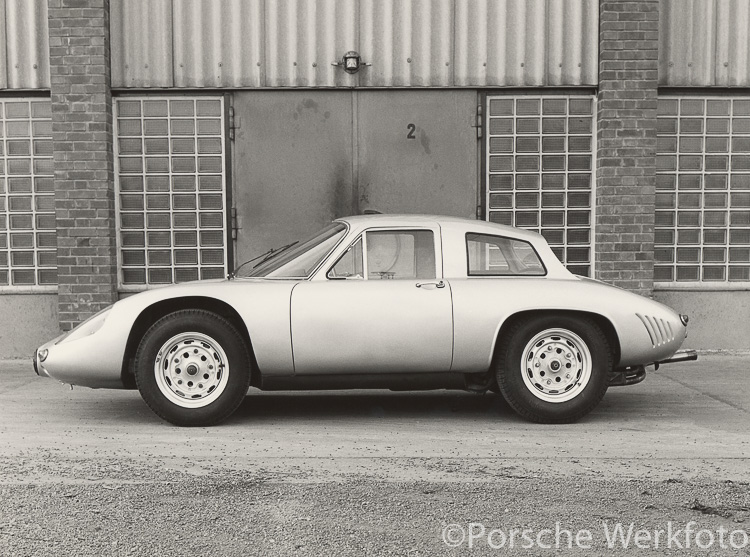

At first sight, the 356 B Carrera GS/GT may not be Porsche’s most elegantly designed racing car, comprising a number of design cues from various models within the range. When the car’s sleek, almost sharp-edge front end was combined with the rather ordinary, abrupt tail end, the mechanics in the race department nicknamed it ‘Dreikantschaber’, which translates to ‘triangular scraper’. It may have resembled a three-sided paint scraper to some, but this model deserves somewhat more respect than that, as it proved a deceptively reliable and very successful workhorse.


Only two of these cars were produced, the bodies being fabricated from aluminium by the company Wendler, in Reutlingen just south of Stuttgart, with Porsche finishing the cars back at the factory. The two chassis were: #122991 which was finished in March 1963 and #122992 which was finished a few months later in June 1963. It was intended that the first car would compete in the Targa Florio and the second at that year’s Le Mans 24 Hours. The two cars are outwardly very similar except for one telling detail, and that is the length of the rear side window which in chassis #122991 was a short side window, compared with its slightly later sibling, chassis #122992, which had a longer side window. This difference was created by modifying the car’s B-pillar, which on #122991 was wider (resulting in a short window), while #122992 had a narrower B-pillar giving a longer rear window.

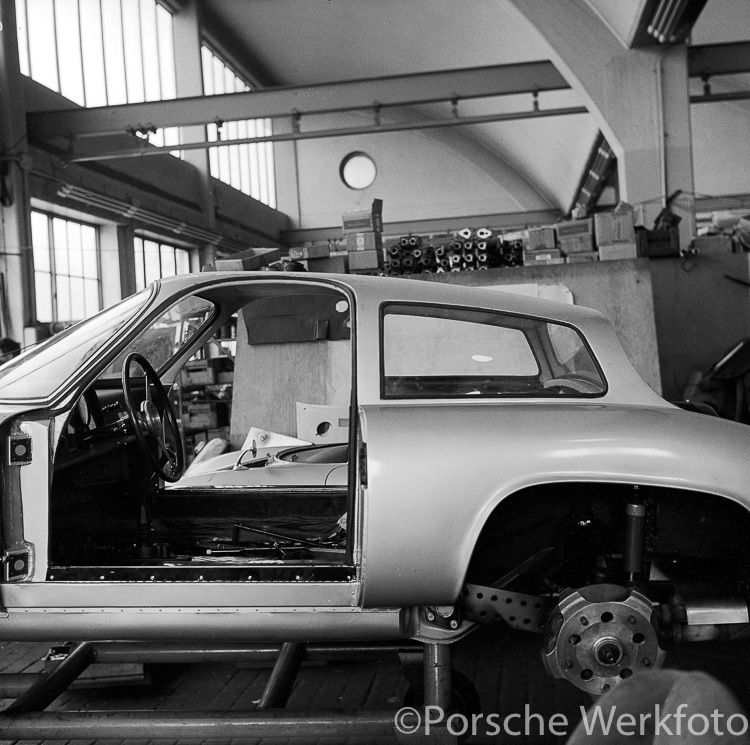
Both cars were powered by the trusty Fuhrmann 4-cam 1966 cc engine which developed 160 bhp, giving the car a top speed of 235 km/h, the power being driven through a Type 741 4-speed gearbox. The door windows were in made from lightweight Plexiglass, while the front and rear indicator lights were sourced from the 356 production model parts bin. The 356 B Carrera GS/GT was thus the final aluminium-bodied race car produced by Porsche, which went onto to rack up a hugely impressive list of race wins and class wins in 1963 and 1964.
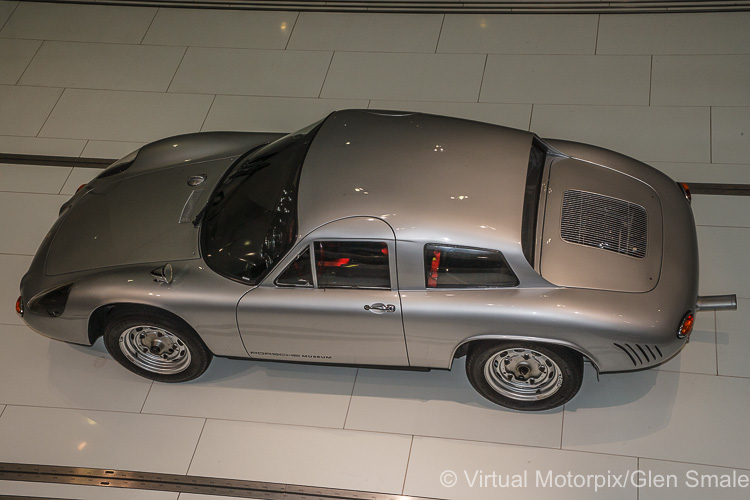
Racing achievements
The 356 B Carrera GT was successful right out of the box, scoring a third overall placing and first in class (GT 2000) at the 1963 Targa Florio in the hands of Edgar Barth and Herbert Linge. This was chassis #122991 as the sister car was not yet ready. Just two weeks later at the Nürburgring 1000 km, Hans-Joachim Walter and Ben Pon brought the same car home in fourth place overall, again winning the GT 2000 class.

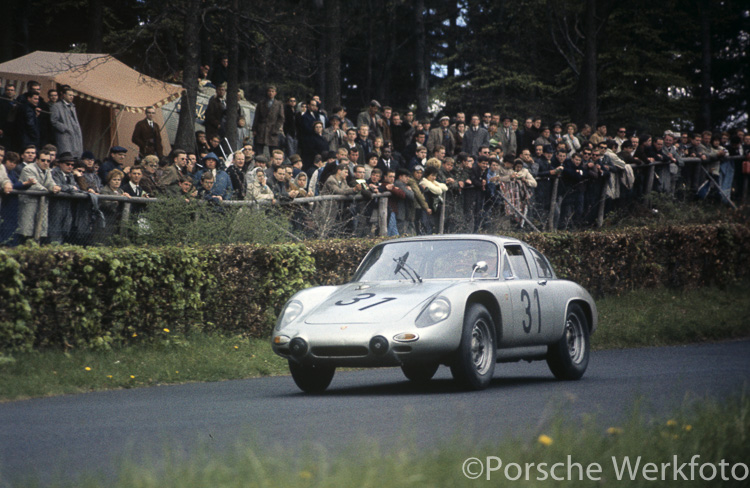
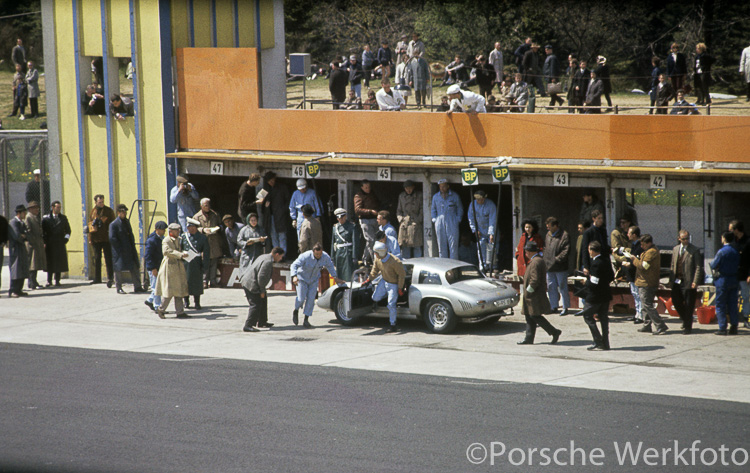
The Dreikantschaber’s next outing was at the Le Mans 24 Hour race on 15-16 June. For this race, Porsche entered a pair of the new 356 B Carrera GTs, as chassis #122992 was now ready and operational. However, this would be a disappointing race for Porsche, as only the trusty old 718 W-RS (chassis #047 Grossmutter) would cross the finishing line, in eighth place overall. Both of the Dreikantschabers would retire with engine trouble, chassis #122992 after just 94 laps, and #122991 after 115 laps.
[the_ad id=”12415″]
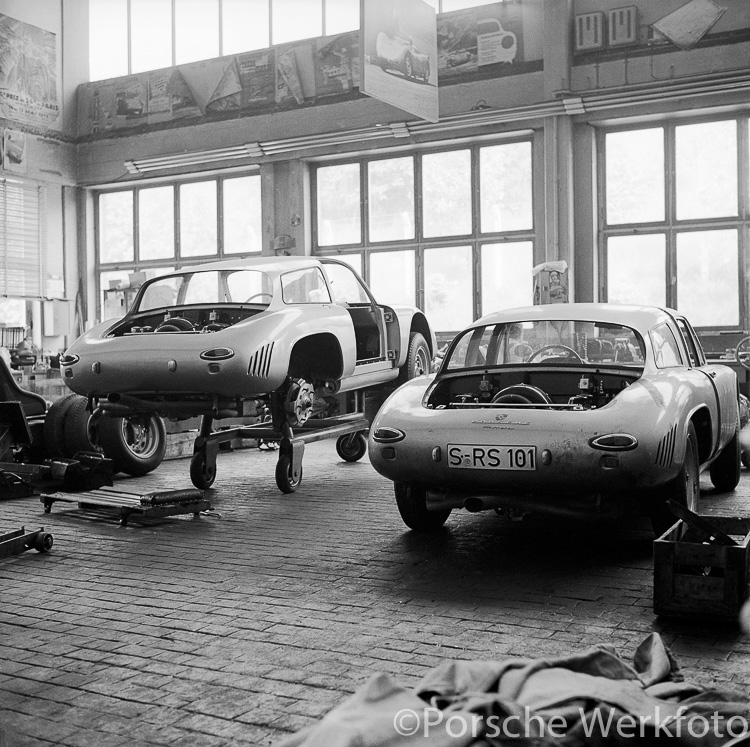

Just three weeks later, in the Auvergne Trophy held at the Charade circuit in south central France, both Dreikantschabers were back in action, this time with better results. Edgar Barth would bring chassis #122991 home in sixth place overall and first in the GT 2000 class, while Herbert Linge would finish twelfth and second in class behind his teammate. Jo Bonnier would give chassis #122991 its first overall victory in Round 6 of the German GT Championship at the Solitude circuit just a short while later.
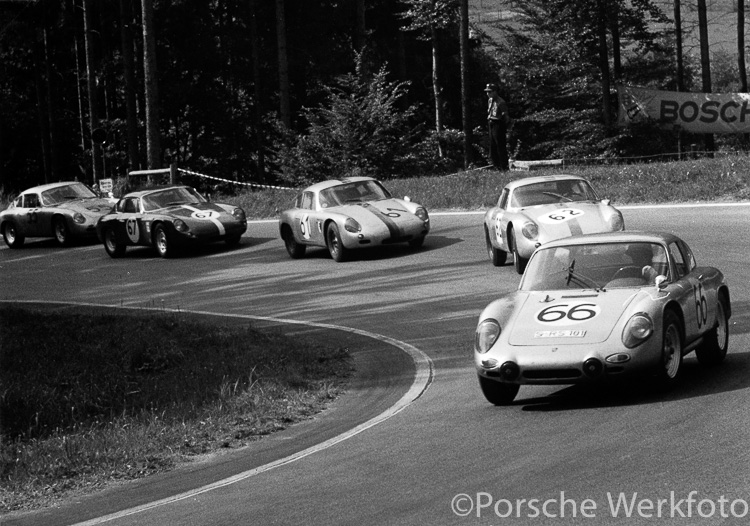
Hill climbing, a very popular motorsport activity in the 1960s, was also a favourite of the Dreikantschaber, as Herbert Müller took chassis #122991 to an overall fourth place and first in class. Müller scored another class win at the Ollon-Villars Hill Climb with chassis #122991 at the end of August that year, and again at the Gaisberg Hill Climb the following month.

The 1964 season started well for the pair of 356 B Carrera GTs as they competed in the season-opening race at Daytona. The 12-hour, 2000 km event on 16 February, was no less sparkling in the array of cars that participated. While Ferrari 250 GTOs filled four of the top five places, coming home in sixth place overall was the Dreikantschaber (chassis #122992) driven by Porsche stalwarts Edgar Barth and Herbert Linge, who were joined for a time by Jo Bonnier. They had no trouble in taking the GT Div. II 2000 class honours in the process. Chassis #122991 crossed the line in eighth place overall, securing a very respectable result for the four-cylinder Porsches against the mighty Ferrari V12s and the rumbling V8 Shelby Cobra.

The following race was the Sebring 12 Hours where both cars turned in solid performances. The Sebring race saw a fierce battle erupt between the Ford-powered Cobras and an assortment of GT and prototype Ferraris. This race was also the debut outing for the new Porsche 904 which had to run in the Prototype GT class, along with the 718 W-RS Grossmutter. In all, there were eleven Porsches in the field which included no less than five of the new 904s in the field, all in private hands, as the car had not yet been homologated. When the chequered flag fell after twelve hours, the top finishing Porsche was the 904 of Lake Underwood/Briggs Cunningham in ninth position overall. This result must be taken in the context of the cars that finished ahead of it, which included four Ferraris and four Shelby Cobras – not bad for the maiden outing of the 904. Of the two Dreikantschabers, chassis #122992 driven by Ben Pon/Joe Buzzetta came home in eleventh place overall, winning the GT 2000 class. Chassis #122991 driven by Don Wester/Bruce Jennings finished in 19th place, and second in class.

An event that had become one of Porsche’s favourite hunting grounds was the Targa Florio, held on 26 April 1964 on public roads in the mountains of Sicily. Here the 904 would snatch victory being followed home by a second 904, with a 904/8 in sixth place. Günther Klass and Jochen Neerpasch would bring chassis #122991 across the line in seventh place overall and third in class. This result proved the versatility of the 356 B Carrera GT that had achieved strong results on closed circuits, hill climbs and the tortuous Targa Florio.
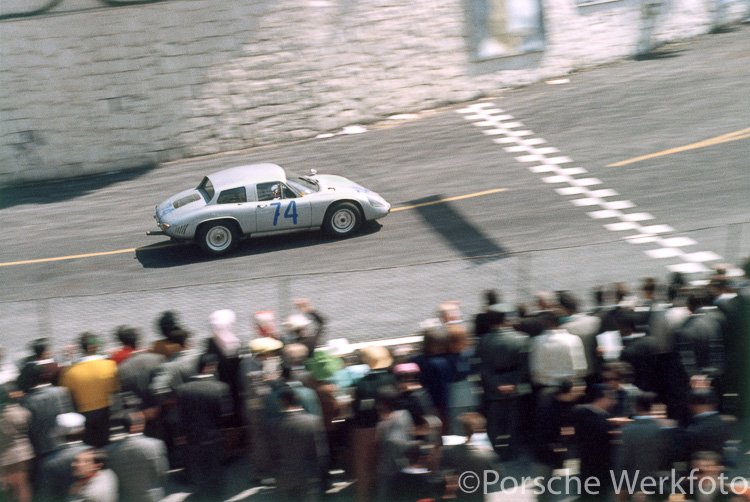
Through the rest of the 1964 and 1965 seasons and beyond, the Porsche 904 would increasingly become the dominant Porsche GT race car of choice. But the 356 B Carrera GT ‘Dreikantschaber’ would provide Porsche with a capable and never-to-be-underestimated race car while the 904 was being developed. As an intermediate race car, it had done more than could have been reasonably expected for a ‘stop gap’ model. Perhaps it was not given the attention that the 550 family of racers was given before it, nor the 904 that came after it, but Porsche’s brilliantly capable Type 587/2 engine combined with the proven chassis and other mechanicals, proved itself yet again!
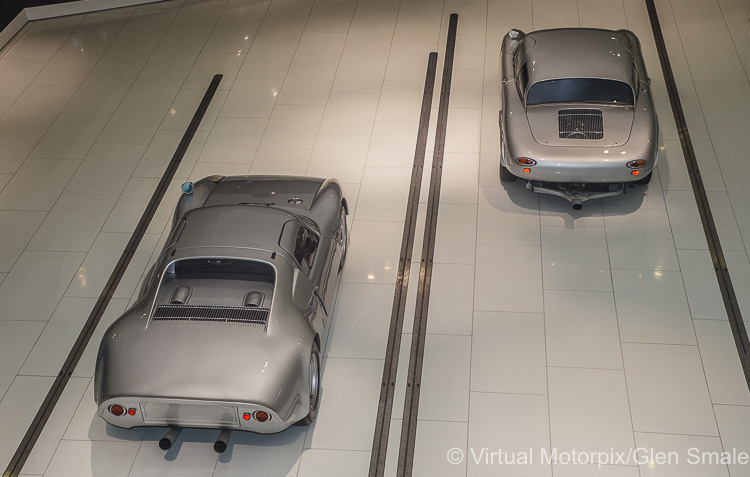
Bibliography
| Time and Two Seats | János Wimpffen, Motorsport Research Group, 1999 |
| The Porsche Book | Jürgen Barth & Gustav Büsing, David Bull Publishing, 2009 |
| Carrera: The Porsche 4-Cam Motor… | Rolf Sprenger & Steve Heinrichs, Delius Klasing, 2014 |
| Le Mans 24 Hours 1960-69 | Quentin Spurring, EVRO Publishing, 2015 |
| Targa Florio – 20th Century Epic | Pino Fondi & Gianni Cancellieri, Giorgio Nada Editore, 2006 |
Written by: Glen Smale
Images by: Porsche Werkfoto & Virtual Motorpix/Glen Smale







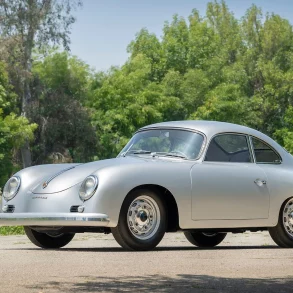

Intersting well told story, even new to most insiders
0
Yes Pim, this was not the most high profile Porsche racer, but it was nevertheless an important step along the way to the top for them. I like this little low key racer, and it deserved a moment in the limelight!!
0